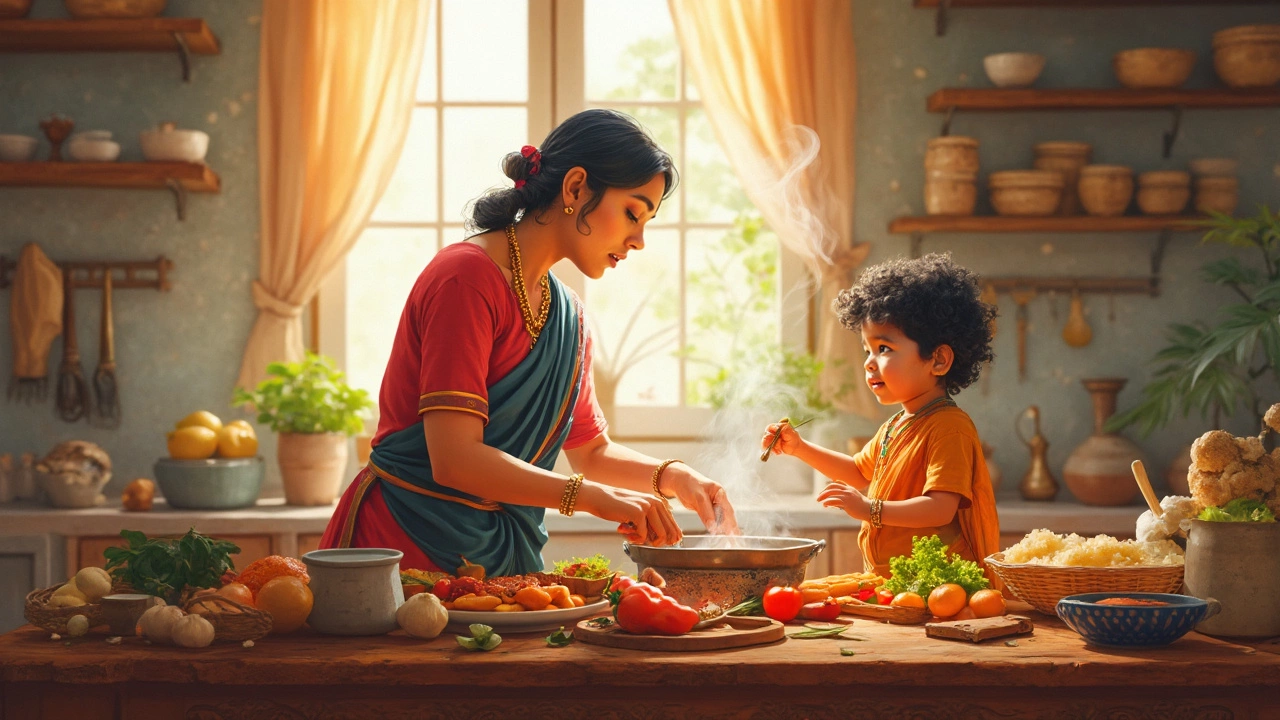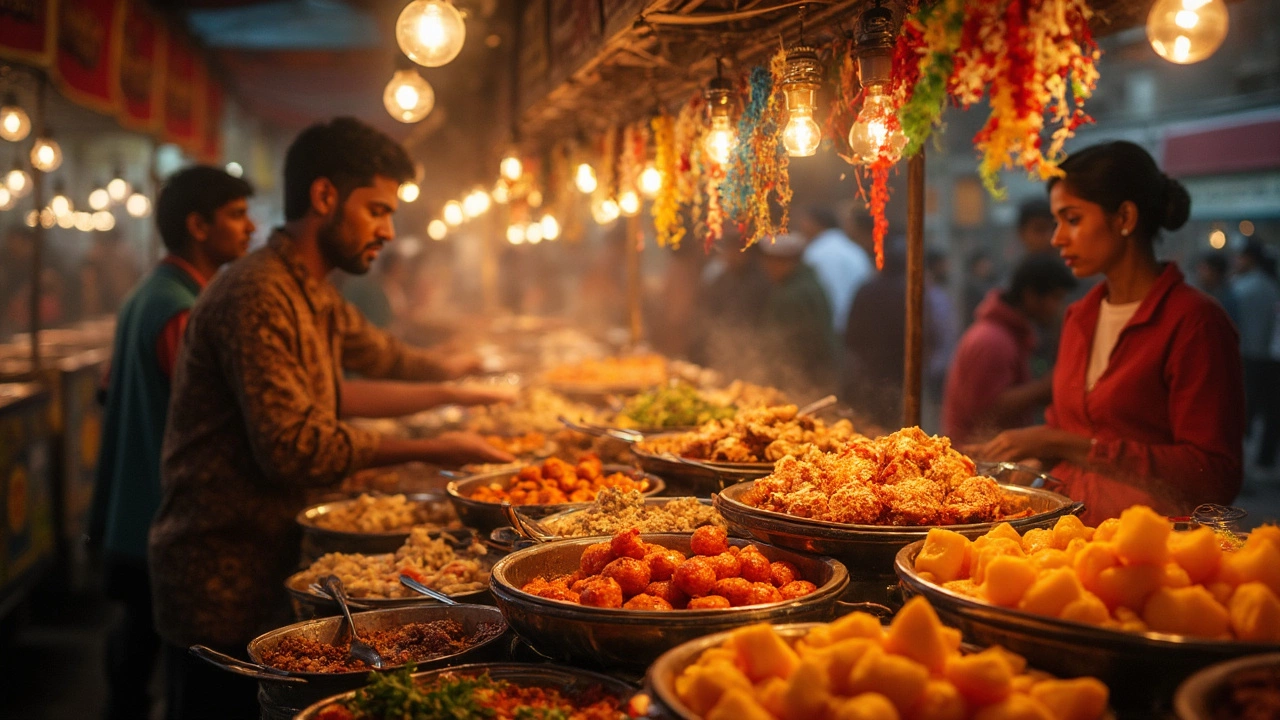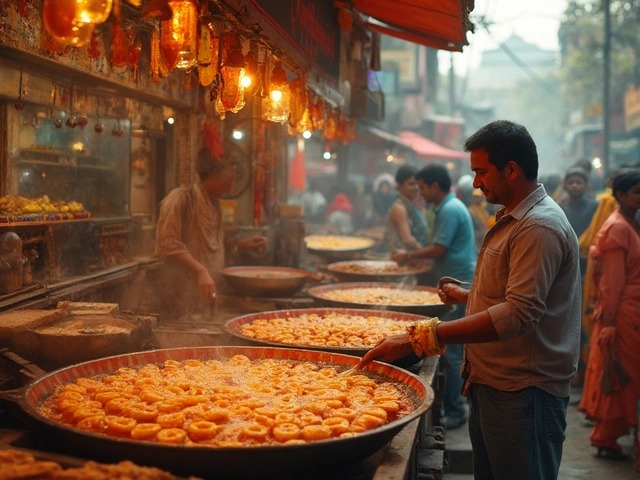We all know Indian food is a treat to the senses, bursting with flavors, colors, and aromas. But did you know some of these tantalizing dishes might be less than kind to your health? Yep, it’s true. Some popular Indian foods, while taste-bud favorites, are loaded with things like ghee, sugars, and creamy gravies that can leave your waistline and arteries begging for mercy.
Take, for instance, butter chicken. The name says it all. It’s indulgent, creamy, and oh-so-delicious—but also packed with butter and cream. Then there's the beloved samosa, which is deep-fried to crispy perfection. No one's denying it tastes amazing, but it's not doing your health any favors with all that oil soaking in every bite.
Feeling a little guilty about those cravings now? Don't sweat it—there are ways to enjoy the goodness without going overboard. Swapping some ingredients or changing cooking methods can make a big difference. For instance, using yogurt instead of cream in certain dishes or baking instead of frying can cut plenty of fat and calories.
- The Richness of Indian Cuisine
- Popular but Unhealthy Dishes
- Healthy Alternatives and Tweaks
- Balancing Taste and Health
- Practical Tips for Health-Conscious Eating
The Richness of Indian Cuisine
Indian cuisine is like a vibrant tapestry of flavors and traditions, woven together over centuries. It’s not just food, but an experience that brings people together, enriched by regional specialties and cultural influences.
From the spicy curries of the north to the coconut-infused dishes of the south, Indian food is a kaleidoscope of flavors. Each region offers its unique twist, with the north favoring dairy products like ghee and paneer, while the south experiments with tamarind and curry leaves.
Fragrant spices like cumin, coriander, and turmeric play crucial roles, not just in flavor but also in tradition and supposed health benefits. These ingredients add depth and richness, making an ordinary dish extraordinary. The balance of flavors is key; sweet, sour, spicy, and bitter elements often meld together in a symphony of taste.
Street Food Adventure
Let’s talk about street food, the heart and soul of Indian food culture. From chaat to idli, these quick bites are as diverse as they are delicious. Chaat, with its tangy, spicy, and crunchy layers, is a staple in cities like Mumbai. It’s so popular that in 2023, chaat sales reportedly skyrocketed by 25% during festival seasons.
But, as tasty as these treats are, they often come with a hidden cost—laden with oils and fats that are perfect for indulging once in a while but not for everyday consumption.
Traditional Feasts
Then there are traditional feasts, where a simple meal can transform into a grand affair. Festivities wouldn’t be complete without dishes like biryani or masala dosa. These meals celebrate life and community but can be heavy on calories due to generous amounts of oils and carbohydrates.
Despite this, you can still enjoy Indian cuisine mindfully. By choosing healthier methods, like steaming or grilling, and using fresh ingredients, you can partake in the joy without the guilt.
Popular but Unhealthy Dishes
When it comes to Indian cuisine, there's no shortage of iconic dishes that have won hearts far and wide. But some of these delicious creations pack more of an unhealthy punch than you might think. Let's break down a few crowd favorites that should be consumed with a bit of caution.
Butter Chicken
Butter chicken is a superstar in the land of rich and creamy curries. This dish typically includes marinated pieces of chicken swimming in a sauce made with heaps of butter, cream, and traditional Indian spices. While it's a treat for the taste buds, that creamy concoction often results in a calorie and saturated fat overload.
Samosas
Next up on the list are samosas. These deep-fried pastries are usually filled with a mix of potatoes, peas, and spices. It's hard to resist their crispy outer shell, but all that oil they soak up during frying makes them a high-fat, high-calorie snack.
Biryani
Biryani is more than just flavored rice—it's a hearty meal, often loaded with mouth-watering pieces of meat or vegetables. Cooked with ghee and sometimes served with raita or fried onions, biryani is another calorie-heavy delight. Portions can be large, making it easy to overindulge.
Jalebi
When you’re thinking about Indian sweets, jalebi often tops the list. These sugary spirals are made from flour batter deep-fried and soaked in sugar syrup. They’re sticky, sweet, and irresistible but, unfortunately, they rank high on the sugar scale and can lead to sugar spikes if you're not careful.
Poori
Poori is a type of leavened bread that's deep-fried until puffy and golden. Rich in carbs and oil, it often accompanies other dishes high in calories, making it a double whammy for anyone watching their weight.
So, what's the takeaway? Enjoy these unhealthy Indian dishes as an occasional indulgence rather than a daily fare. Moderation is key, and knowing what goes into your favorite dishes can help you make more informed choices.

Healthy Alternatives and Tweaks
Alright, so we know some of our fallback Indian food favorites aren’t the healthiest. But the good news? You don’t have to give them up! There are plenty of smart swaps and tweaks you can make to cut back on the unhealthy stuff.
Lightening Up Popular Dishes
Let's start with a classic like butter chicken. Instead of heavy cream, try using plain Greek yogurt. It gives you that creamy texture without all the extra fat. And swapping regular white rice for brown rice is another great move, adding fiber and more nutrients.
Samosas are another guilty pleasure, right? Try baking them instead of frying. You still get that satisfying crunch minus the excess oil. If you can, use whole wheat flour for the pastry. It’s a simple change that still tastes great.
Saying Yes to Veggies
Many Indian cuisine dishes can be easily transformed into healthier versions with a boost of veggies. How about a veggie-packed biryani? Add carrots, peas, and bell peppers. Cook the veggies with less oil, and you'll still get all the flavor without going too heavy.
Portion Control and Balance
Remember, moderation is key. It’s completely okay to enjoy your favorite Indian dishes; just keep an eye on portion sizes. Balance heavier meals with a fresh salad or some steamed veggies on the side. The veggies will help fill you up with fewer calories.
For the love of chapati, if you’re a fan of these fluffy flatbreads, consider making them with multigrain flour. You'll be surprised how a little switch like this can make your meal much healthier.
A Handy Nutritional Comparison
Check out this brief comparison to see how these tweaks can make a difference:
| Dish Component | Traditional (calories) | Modified (calories) |
|---|---|---|
| Butter Chicken Sauce | 500 (with cream) | 350 (with yogurt) |
| Baked Samosa | 260 (fried) | 180 (baked) |
Bottom line? A little creativity in the kitchen can go a long way in making unhealthy Indian foods easier on your health without sacrificing flavor.
Balancing Taste and Health
Eating well doesn’t mean giving up the deliciousness of Indian cuisine. The trick is to make smart choices without missing out on flavor. You’d be amazed how small tweaks can make a big difference in making a meal healthier.
Opt for Healthier Cooking Methods
First things first—how you cook matters. Instead of frying, try grilling, steaming, or sautéing with minimal oil. For example, steamed idlis are a much healthier alternative to fried puris, offering a similar taste experience without the extra grease.
Mindful Ingredient Swaps
A small change like replacing heavy cream with yogurt in dishes like curries can significantly cut down saturated fats while still keeping the dish creamy and satisfying. Another handy trick is using whole wheat flour instead of refined flour to make roti or dosa batter. It'll add more nutrients and keep you fuller longer.
Spice It Right
Spices are at the heart of Indian food, and guess what? They’re also packed with health benefits! Spices like turmeric, cumin, and coriander not only add flavor but also boast anti-inflammatory and antioxidant properties. So, feel free to sprinkle some more in your dishes.
Portion Control
Sometimes, it’s not just what you eat but how much. Keeping portions modest allows you to enjoy your favorite dishes without overdoing it. Instead of a mountain of biryani, serve yourself a smaller amount and pair it with a healthy salad or some lightly spiced vegetables.
Table of Popular Healthy Ingredients
| Ingredient | Benefit |
|---|---|
| Lentils | Great source of protein and fiber |
| Quinoa | Gluten-free grain with high protein |
| Spinach | Rich in iron and vitamins |
By adjusting your cooking techniques, making thoughtful swaps, and being mindful of portion sizes, you can enjoy the richness of Indian culture in each meal while steering clear of anything that might weigh you down—literally and figuratively.

Practical Tips for Health-Conscious Eating
Want to enjoy all those amazing Indian foods without the guilt trip? No worries, there are plenty of simple tweaks you can make to lighten things up without losing the flavor. Let's dive into some easy-to-follow tips!
Swap Out Ingredients
Consider using low-fat alternatives. For example, replace heavy creams with greek yogurt or opt for coconut milk instead of ghee. It cuts down on the fat but still gives you a creamy dish.
Focus on Cooking Methods
Frying is delicious but baking or grilling can often achieve a similar texture with a fraction of the calories. A baked samosa can be just as satisfying as the fried version but much friendlier to your waistline.
Watch the Portions
It’s easy to overload your plate with various foods, especially at a buffet. Stick to smaller servings and savor each bite instead of going for a second helping. This way, you’ll enjoy your favorite dishes without overindulging.
Load Up on Veggies
Vegetables are your best friend in a balanced Indian cuisine. Try to fill at least half of your plate with various veggies. They're rich in fiber and low in calories, which can keep you feeling full.
Add Spices Thoughtfully
Spices don't just add flavor—they can also benefit your health. Turmeric, for instance, has anti-inflammatory properties. Just a pinch to your dishes can offer amazing benefits.
| Ingredient | Calories | Healthy Swap |
|---|---|---|
| Heavy Cream (1 cup) | 816 | Greek Yogurt (1 cup) - 130 |
| Ghee (1 tbsp) | 112 | Coconut Oil (1 tbsp) - 120 |
Incorporating these simple changes won't overhaul the way you appreciate Indian food, but it'll definitely help keep your health on track. Plus, you'll still be getting all those rich flavors you love so much!





